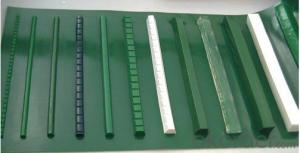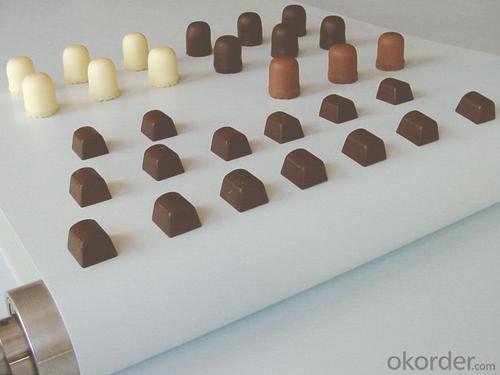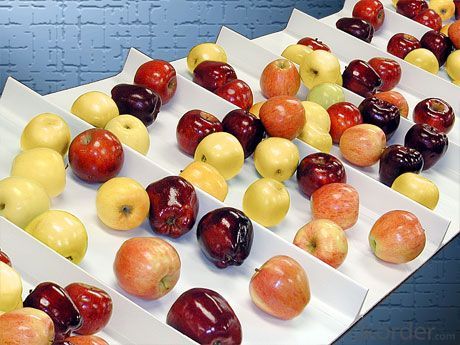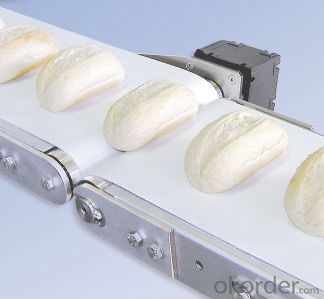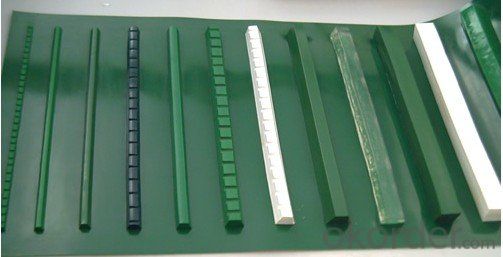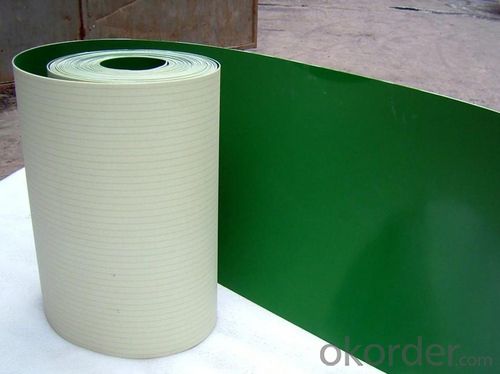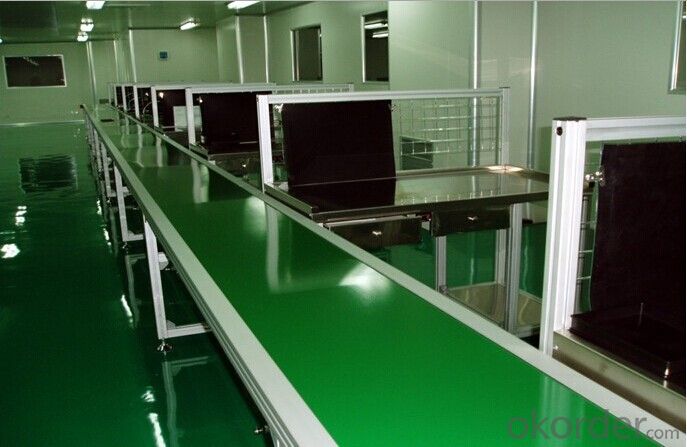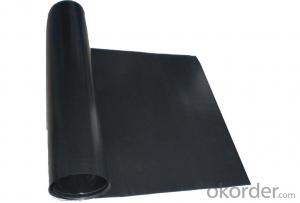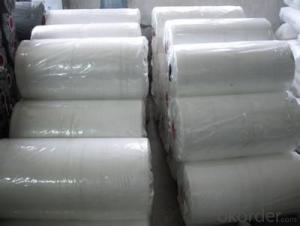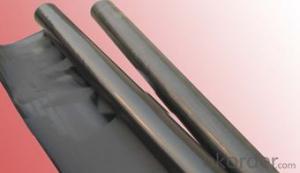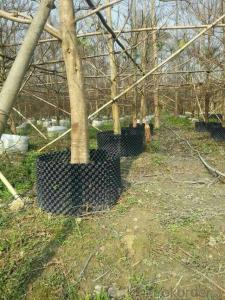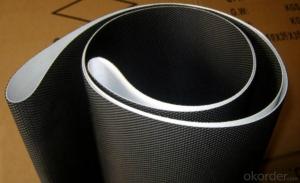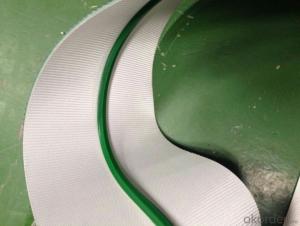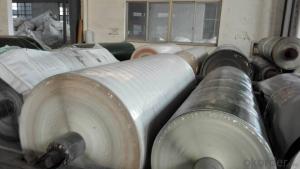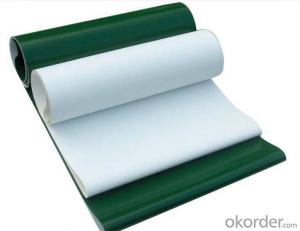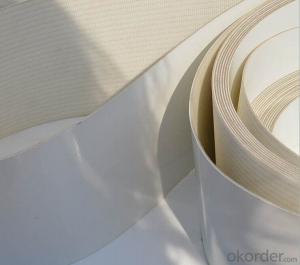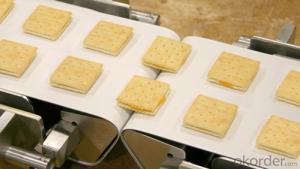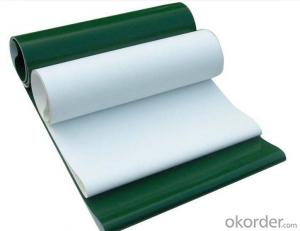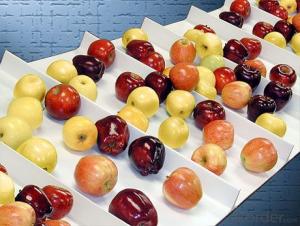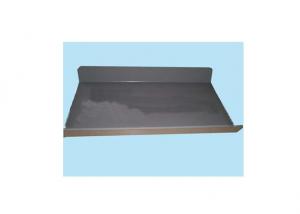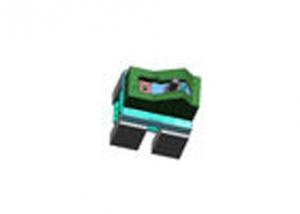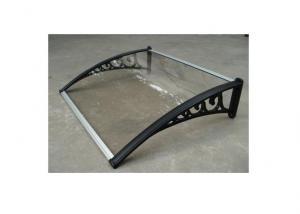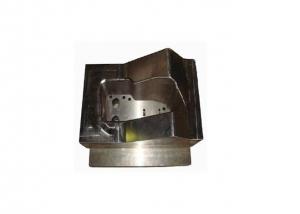White PVC PU Conveyor Belt For Bread Biscuit Meat industry
- Loading Port:
- China main port
- Payment Terms:
- TT or LC
- Min Order Qty:
- 10 m²
- Supply Capability:
- 5000000 m²/month
OKorder Service Pledge
OKorder Financial Service
You Might Also Like
White PVC PU Conveyor Belt For Bread Biscuit Meat industry
PVC conveyor belt which is made of PVC plastic surface (Polyvinylchloride, PVC), consisting of a polyester fiber cloth and PVC plastic composition. Its working temperature is generally -10 ° to + 80 °, which is generally a joint international toothed joints, good lateral stability of the various suitable transport complex environment.
According to the classification of industrial applications, PVC conveyor belt conveyor belt can be divided into the tobacco industry, the logistics industry conveyor belt, packaging industry conveyor belt, the conveyor belt of the printing industry, the food industry conveyor belt, conveyor timber industry, food processing industry conveyor belt, Entertainment industry conveyor belt, the conveyor belt aquaculture industry, stone industry conveyor belt.
Application:
PVC: Food, medicine, electronics, tobacco, printing, packaging, textile and other production lines belt.
PU: Most applicable to the food industry and other industries .
Subsequent machining technology:
it can add baffle, skirt, sponge, guide bar and etc.
Product pictures:
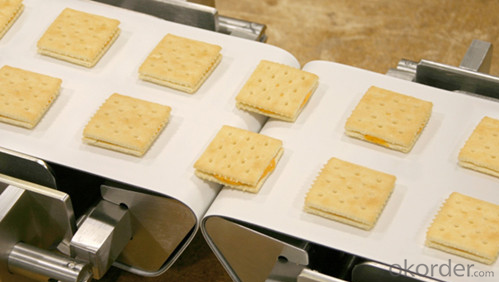
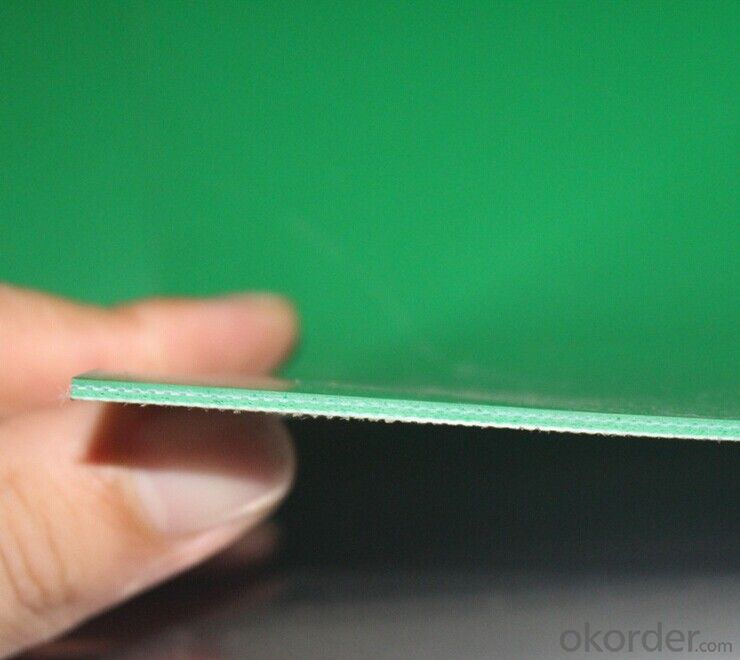
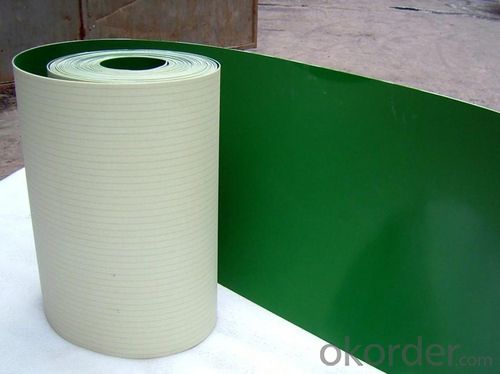
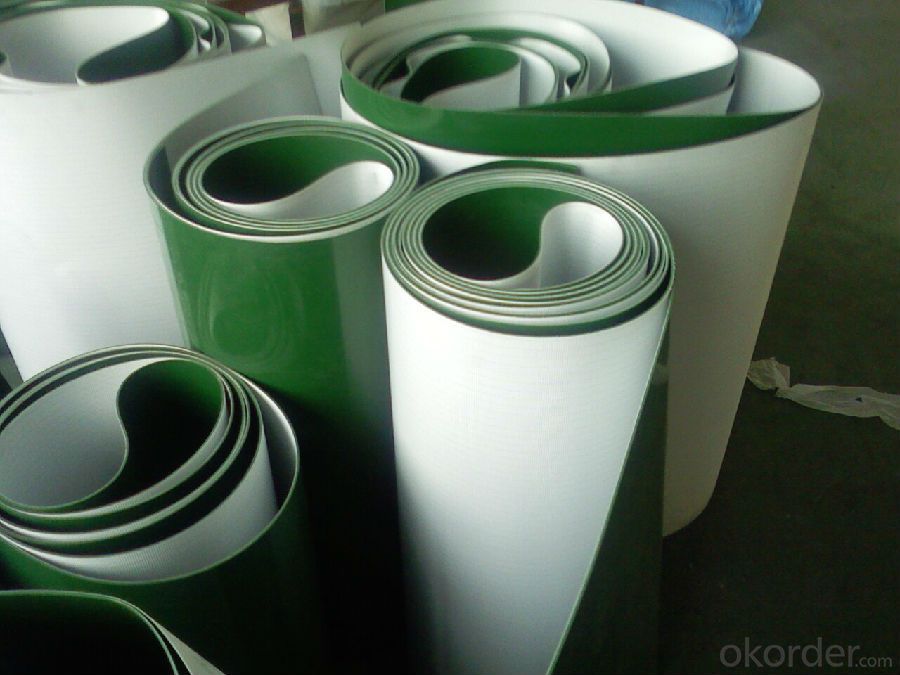
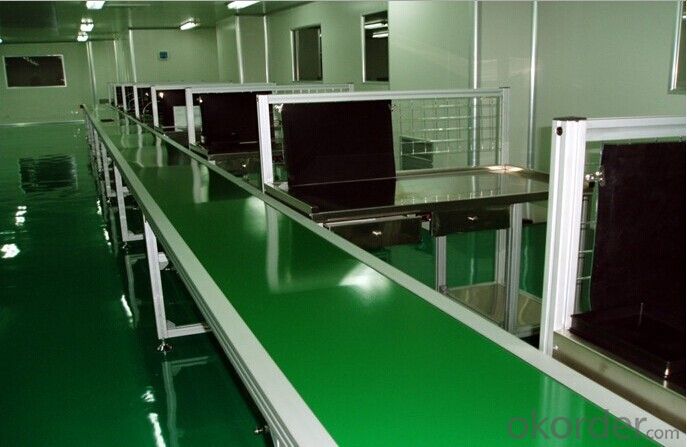
FAQ
Q: Can you do OEM?
A: Yes, we can do OEM products. It's no problem.
Q: How can I get some samples?
A: 1, We are honored to offer you samples. New clients are expected to pay for the courier cost, the samples are free for you, this courier cost charge will be deducted from the payment for formal order.
2, Regarding the courier cost: you can arrange a RPI (remote pick-up) service upon Fedex, UPS, DHL, TNT, etc. to have the samples collected; or inform us your DHL collection account. Then you can pay the freight direct to your local carrier company.
Q: How do you do regarding quality control?
A: Quality is priority? We always attach great importance to quality controlling from the very beginning to the very end:
1).All raw material we used are environmental-friendly;
2).Skilful workers care every details in handling the producing and packing processes;
3).Quality Control Department specially responsible for quality checking in each process.
Q.What are your payment terms?
A: Standard payment terms are 30%T/T,and balance upon the B/L copy .
L/C at sight is acceptable
Other payment terms can be negotiable.
If you want to find more details about the PVC conveyor belt, you could make an Inquiry in okorder.com. Okorder.com provides you the products with best price and quality!
- Q: Do olive nets affect the ripening process of olives?
- Yes, olive nets can affect the ripening process of olives. The nets provide shade and protection to the olives, which can slow down the ripening process by reducing direct exposure to sunlight and air circulation. This can result in slower color change, softer texture, and delayed maturation. However, nets also shield the olives from birds and pests, preventing damage and ensuring a higher yield. Therefore, the impact of olive nets on ripening depends on the specific goals and priorities of the olive grower.
- Q: Can olive nets be customized?
- Yes, olive nets can be customized.
- Q: Do olive nets affect the taste or quality of olives?
- Yes, olive nets can affect the taste and quality of olives. Olive nets are used to prevent olives from falling to the ground during harvest, protecting them from damage. However, if left on for too long, the nets can restrict airflow and sunlight, leading to increased moisture and potential fungal growth. This can negatively impact the taste and quality of the olives. Therefore, it is important to use olive nets judiciously and remove them after the harvest period.
- Q: Are there any alternatives to olive nets for harvesting olives?
- Yes, there are several alternatives to olive nets for harvesting olives. One popular alternative is using mechanical harvesters that use vibrating or shaking mechanisms to detach olives from the tree. Another method involves the use of handheld or electric harvesters, which are similar to combs or rakes designed specifically for olive harvesting. Additionally, some farmers opt for the traditional method of hand-picking olives, which can be more time-consuming but allows for careful selection and quality control.
- Q: Can olive nets be used for mechanical pruning?
- No, olive nets cannot be used for mechanical pruning.
- Q: Do olive nets protect against olive tree bark damage?
- No, olive nets do not protect against olive tree bark damage. Olive nets are primarily used to protect the olives from birds and other animals, but they do not provide any direct protection to the bark of the tree.
- Q: Can olive nets be used in olive groves with uneven terrain?
- Yes, olive nets can be used in olive groves with uneven terrain. The nets are versatile and can be adjusted to fit different terrains and tree configurations. They are designed to protect the fallen olives during harvesting, regardless of the grove's terrain.
- Q: Can olive nets be used on olive trees in pots or containers?
- Yes, olive nets can be used on olive trees in pots or containers. Olive nets are commonly used to protect the olives from birds or other animals. The nets can be draped over the olive tree in a pot or container to prevent the olives from being eaten or damaged.
- Q: How effective are olive nets at preventing fruit damage?
- Olive nets are highly effective at preventing fruit damage. These nets are specifically designed to protect the olive trees from pests, birds, and adverse weather conditions, ensuring minimal fruit loss. The tight mesh of the netting acts as a physical barrier, preventing any potential damage to the olives while allowing air and sunlight to reach the trees. Additionally, olive nets are easy to install, remove, and reuse, making them a practical and cost-effective solution for protecting the fruit during the growing season.
- Q: Can olive nets be used for other fruit crops as well?
- Yes, olive nets can be used for other fruit crops as well. Olive nets are designed to protect the fruit from birds and other pests, and this purpose is applicable for various fruit crops. By using olive nets, farmers can prevent damage to their fruit crops and ensure a higher yield.
Send your message to us
White PVC PU Conveyor Belt For Bread Biscuit Meat industry
- Loading Port:
- China main port
- Payment Terms:
- TT or LC
- Min Order Qty:
- 10 m²
- Supply Capability:
- 5000000 m²/month
OKorder Service Pledge
OKorder Financial Service
Similar products
Hot products
Hot Searches
Related keywords



